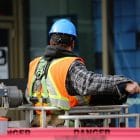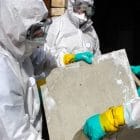Types of Asbestos and how to identify them
When talking about asbestos, it is typically considered one single material (with a pretty bad reputation). However, it is a little misunderstood. While, yes, it is a dangerous substance when it is disturbed and fibres are released into the air (where they can be inhaled), it is also not just one single material. Asbestos has six different types, used for different materials and sometimes for different reasons. Here are the types of asbestos, and where you can expect to find them.
Chrysotile
This type of asbestos is also called ‘white asbestos’ and is the more common of all the varieties. Typically, you will find this used for insulation in ceilings, roofs and walls in residential and commercial buildings. Interestingly, it is also used in less known ways, such as insulation in pipes and ducts, car brake linings and gasket seals.
Crocidolite
Also known as blue asbestos, this is used a lot in trains (steam engines, precisely) and can also be found on pipe insulation, cement and some plastic products. It doesn’t have the heat resistant properties of other asbestos, though, so is not found as much in places like kitchen walls, floors and ceilings, and very rarely, if ever, in commercial buildings.
Amosite
‘Brown asbestos’ is most often found in cement sheets, insulation for pipes, thermal insulation and ceiling tiles. It makes up about five percent of asbestos use, and is the second most common type of asbestos.
Anthophyllite
This asbestos is typically a greeny-grey or white material that was used, though far less than chrysotile (though occurs in chrysotile) and amosite, for construction and insulation materials. The fibres of anthophyllite are long (needle-like) that can be inhaled and enter the lungs easily, causing serious damage (and can be fatal).
Actinolite
This asbestos is dark and, like anthophyllite, becomes airborne in needle-like fibres that can be inhaled into the lungs. It’s made up of magnesium, iron, silicon and calcium, and is, like all asbestos, extremely dangerous if it enters the airways or is ingested. It’s typically found in older cement, insulation, paint and drywall materials.
Tremolite
Just like actinolite, this is not an asbestos that is found in commercial buildings, but can make up the contaminants in talc, vermiculite and chrysotile. It can be white, green, grey or transparent.
While it’s up to the professionals to officially identify and remove asbestos, it’s always good to have some understanding of the nature of asbestos and the different types. This will help you know when to be concerned, when not to panic, and when to call in the professionals to solve your asbestos issue before they have time to become a serious one.






